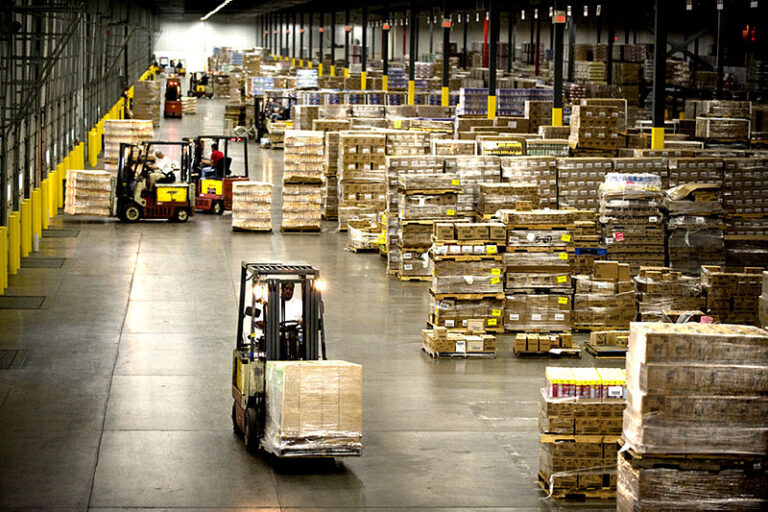How Wineries Evolved from Chateau-Only to High Design
Curbed Miami

[The Bodegas Ysios winery and visitors’ center in Spain, designed by Santiago Calatrava.]
Wineries are a modern phenomenon. While viticulture has existed since the 4th century BC—Slovenia and Albania, surprisingly, vie for the title of oldest wine-producing nation—until very recently, the architecture of wineries has been purely functional. Wine making, always a risky business, requires large resources of land, labor, and time. For years, producing famous vintages was the pursuit of the chateau-owning class, and wineries themselves were essentially industrial estates: grape nurseries and farms, with onsite factories, storage facilities, and living quarters for workers and owners.
America was fairly late to the game as a wine-drinking and wine-producing nation. Hampered by Prohibition, then expedited by Julia Child—who ended each of her televised 1960s shows on French cooking with a generous glass of Bordeaux—and by Italian immigrants who’d been secretly making table wine at home, local wine production became an independent, fully-fledged industry in the 1970s. The breakthrough moment was the 1976 “Judgement of Paris” blind tasting, where French judges, to their own surprise and, perhaps, chagrin, placed two Napa wines (the 1973 vintages of Chateau Montelena Chardonnay and Stag’s Leap Cabernet Sauvignon) best in both categories against European competitors.

[Adelsheim photo by Larry Ferar.]
Larry Ferar, an Oregon-based architect specializing in wineries, was originally drawn to the field through his own enthusiasm for wine. “The fact that wineries are designed around a specific process makes them interesting buildings in themselves,” says Ferar. He traces the development of the modern winery through distinct stages, from a focus on “the potential of winery design to increase quality and efficiency” in the 1990s, with the introduction of wine production methods like gravity flow, to the “direct-to-consumer marketing” that became a key element of winery design in the following decade.
Ferar has a long-standing relationship with Oregon vintner David Adelsheim, for whom he produced his first winery in the early 1990s, and through whom he was introduced to Robert Drouhin, a scion of the century-old Burgundy estate Maison Joseph Drouhin of Domaine Drouhin Oregon, in the Willamette Valley.
Drouhin was researching traditional winemaking when he realised that moving grapes through the various processes with gravity was more gentle than using machinery—a particular concern with the sensitive Pinot Noir with which Oregon made its name internationally.
One result of the gravity-flow boom is that a large number of modern wineries were subsequently built into hills as multi-level facilities—known as the “stepped model.” A1973 Oregon land-use law prevented hillsides from being converted to residential land, leaving them available for wine.”It works because many vineyards around the world are on slopes, though California is flat land,” says Ferar. “In Oregon a lot of them are on hillsides, which lends itself to gravity flow.”

[Photo of Woollaston by Larry Ferar.]
The same is true of New Zealand, where Ferar designed one of his largest and most distinctive projects to date. The gravity-fed, four-level Woollaston Estates is built into the side of Mahana Hill near the small city of Nelson, in the country’s sparsely populated South Island.
Owner Philip Woollaston, a former Minister of Conservation (and son of Sir “Toss” Woollaston, one of the country’s foremost modern landscape painters) wanted the winery to impose as little as possible on the environment. Thus, a green roof of native plants—mostly silvery tussock grass—allows it to vanish into the landscape. “The landscape was so beautiful we really didn’t want it to stick out, so if you see it from the downhill side, it’s almost invisible,” says Ferar.
Inside, skylights and continuous clerestory windows provide natural light and prevent the interior from feeling too subterranean. While the hill also provides a huge thermal mass, the building has little exposure to passive heat from the sun and is further shaded by the vast planted roof, two factors that contribute to the “thermal lag,” where heat is stored during the day and gradually released overnight. This allows the winery to maintain a consistent temperature, while significantly cutting its energy requirements.
This is the best feature of a stepped building, says Ferar. “If the cellar can be underground that’s definitely energy saving, and it’s better for the wine, because there’s a more consistent temperature, and you don’t have to use air-conditioning, which increases evaporation.”
However, he believes that too much faith in harnessing gravity to save energy is misplaced. “You’re still building a multi-million dollar building that uses up a lot of resources.”

[Dominus Estate, which is closed to the public.]
Flatter California has produced a different model of architect-designed winery. Napa’s Dominus Estate, designed by Herzog & de Meuron and completed in the 1990s, marked one of the first collaborations between a winery and major architecture firm. With its emphasis on materials, in this case a cladding made of gabions filled with basalt rocks from a nearby canyon, it’s a striking example of the practice’s earlier, intensely purist work.
To counter the Napa Valley’s extreme climate variations, the architects used historical precedents from Northern Africa and Moorish Spain. The gabion screens, some of which are packed tightly with small stones and some more loosely with larger rocks, regulate the building’s temperature by bothinsulating it and allowing it to “breathe” through the spaces between the rocks, which also create a kaleidoscope effect of light and shadow during the day. The use of local materials also helps it become part of the landscape in the same way any natural feature might.
 Similarly, Alvaro Siza’s design for theQuinta do Portal cellars, a 19th century vineyard complex that includes restaurants and lodging in the Douro region of his homeland, Portugal, is a quietly elemental addition to the rolling landscape. Completed in 2008, the impassive, seamless façade has a base of local slate, covered with a cork-clad wall and painted with earthy orange stucco, giving it a uniform, textured look typical of Siza’s work.
Similarly, Alvaro Siza’s design for theQuinta do Portal cellars, a 19th century vineyard complex that includes restaurants and lodging in the Douro region of his homeland, Portugal, is a quietly elemental addition to the rolling landscape. Completed in 2008, the impassive, seamless façade has a base of local slate, covered with a cork-clad wall and painted with earthy orange stucco, giving it a uniform, textured look typical of Siza’s work.
The 1992 Pritzker Laureate has developed a “poetic modernism” heavily influenced by Portugal’s vernacular architecture, and he often uses regional materials and techniques like stucco that have been used for thousands of years. Constructed from concrete slabs on a steel frame, the winery sits mostly underground and houses two large, windowless, and minimal vaults, one for wine and the other for port, both cooled by a green roof above.
International models of the architectural trend to create standalone “destination” buildings include Frank Gehry’s Hotel Marqués de Riscal on the grounds of an historic Rioja winery, an aesthetically ambitious and deliberately flamboyant hotel that appears to flutter with violet titanium ribbons.
Santiago Calatrava’s design for the Bodegas Ysios winery and visitors’ center, in neighboring Spain, also has a simple, elongated rectangular footprint, but the undulating roof was patterned after the shapes of the nearby mountain range, and clad in wood and aluminum to reflect the sun’s rays and create a striking presence in the landscape.
The design reveals the New York-based Spaniard’s three vocations—architecture, structural engineering, and sculpture. The building is on an uneven site, with a pronounced grade change of around 30 feet between the rear and the lower south-facing public entrance. This southern façade is clad with slats of horizontal cedar, which gives it the appearance of an oversized wine barrel.
Flanking the base is a pool of water lined with white ceramic tiles (to keep the water cool), crossed by a simple, rustic granite bridge connecting the red earth of the vineyard with the cool and temple-like interior of the building.
Over the last ten years, one of the most significant influences on winery architecture has been the integration of public spaces that seek to woo tourists by tapping into the poetry at the heart of winemaking—and promote the label’s brand. “Winemakers participate in the agro-tourist thing because, frankly, it’s very lucrative,” says Ferar. “You get twice as much for your wine if you sell it yourself.”

[Inside Woollaston. Photo by Daniel Allen.]
The Adelsheim winery is a snapshot of the evolution of American winemaking, he says. “Initially it was just a production facility, and David [Adelsheim] swore he’d have a tasting room over his dead body. But we built it in five phases, and over the years, as it got bigger, we converted the offices to a tasting room, and developed an open, multi-use fermentation room with smaller tanks that aren’t fixed and can be stacked when not in use, so the space can be used for bottling or for large-scale events.”
Ferar reports that some wine labels now build tasting rooms before a winery itself, preferring to lease or share co-op processing facilities until production reaches a certain size. In Portland, urban collectives like the SE Wine Collective and Boedecker Cellars work with with grapes grown 30 minutes away—urban wineries are popping up in cities from Cincinnati to Dallas to Seattle, sourcing their grapes from America’s (and sometimes the world’s) best wine-growing areas, but making the wine itself right on their customers’ doorstep.
New York is home to three successful urban wineries: City Winery (which also has an outpost in Chicago), Red Hook Winery, and Brooklyn Winery, a specialist in boutique custom crush and micro-lot fermentations. The last is located in a brick building in the heart of gentrified Williamsburg, which was previously used as a creamery, autoshop, and funeral home.

Business partners John Stires and Brian Leventhal, entrepreneurs with no previous professional experience in wine, called in architecture practice JS2 to reshape it for their purposes, which include a temperature- and humidity controlled barrel-aging room, a production room, courtyard and, of course, the bar.
Interiors practice WRK was responsible for the reclaimed wood, vintage iron chairs and tiling that gives the Brooklyn Winery its lived-in air (it opened in October 2010). Testament to its success so far, the courtyard and production room are undergoing further work that will allow them to be used year-round (or off-season, for the production room) for events like weddings.
Despite its industrial setting, perhaps it’s unlikely contender Red Hook that is the closest modern iteration to the spirit of the original chateau, subject to the weather’s vicissitudes and using local grapes. The small, experimental winery in a warehouse on Pier 41 was almost totally destroyed by Hurricane Sandy in 2012, but recovered to tell the tale, and continues to produce wines that originated in its regional terroir—in this case, Long Island and the Finger Lakes.
Back to Blog



